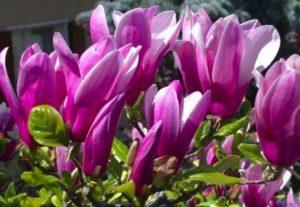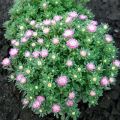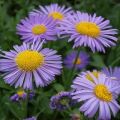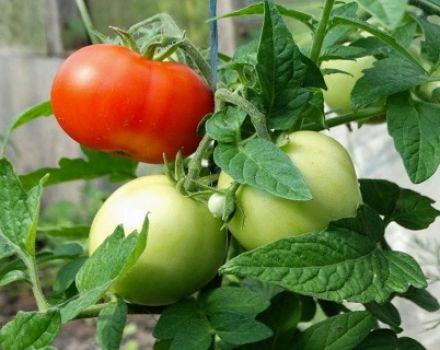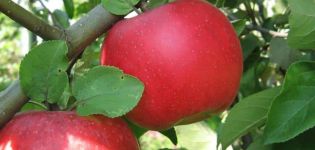Description of alpine mountain edelweiss, growing from seeds and care
There are many legends about edelweiss that tell about love, fidelity and devotion. It is the symbol of these feelings that he is, steadfastly enduring severe frosts, wind and heat. There are about 30 types of culture in nature, alpine mountain edelweiss is one of its beautiful representatives. Further information on the necessary growing conditions, care, methods of reproduction, as well as the use of the plant in landscape design.
The Legend of Edelweiss
There are many legends about this flower. One of them says about a proud beauty who decided to marry a daredevil who plucked an edelweiss growing high in the mountains. Many young people fell off the rocks and died.
Finally, a young man appeared, to whom the mountains submitted, and he tore off the edelweiss. The princess was delighted, but by this time her beauty had faded, and the young man presented the flower to a completely different girl. Following the legend, many guys strive to present this flower to their future wives.
Note! In many countries, it is forbidden to pick edelweiss, therefore, an ornament in the form of this flower is presented as a gift.
Characteristic features of the plant
Edelweiss is a herbaceous plant, reaching a height of 15-25 centimeters. It has narrow leaves, which, thanks to the fleecy pubescence, are able to retain moisture for a long time. The inflorescence is a basket of white or yellow flowers. It is surrounded by star-spread leaves.

Thanks to the creeping rhizome, edelweiss is able to grow independently. Due to this quality, the flower is used as a ground cover plant. But in order to grow it on his site, the gardener must provide the plant with conditions close to natural.
Application in landscape design
Edelweiss is planted in rocky gardens, alpine hills, flower beds, located in the sun. It can frame the lower part of the trunks of hydrangea tree, Syrian rose, cypress, and other low shrubs. The flower will look beautiful against the background of the lawn, as well as next to the grassy plants with a contrasting texture.
Varieties and varieties
The genus of edelweiss includes more than 30 species of this plant. They are very similar to each other. The most common types are:
Alpine
This is the most common type of edelweiss. Its height in gardeners' plots varies from 10 to 20 centimeters.Mountain edelweiss inflorescences consist of scutes collected in baskets. The leaves around them seem as if they are painted white due to the thick tomentose pubescence. To preserve the characteristics of the species, it must be propagated vegetatively.
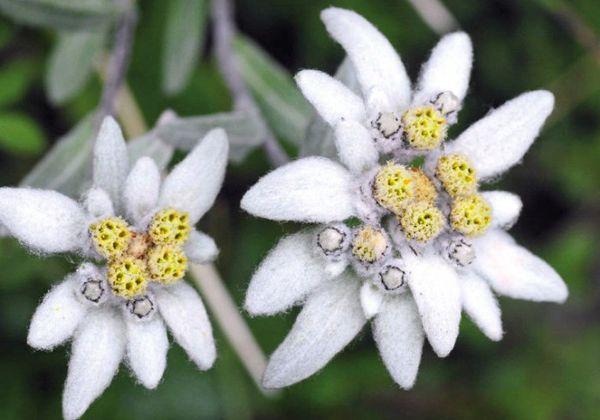
Bicolor
The bushes of the two-colored edelweiss consist of erect shoots. They reach a height of 35 centimeters. White and yellow flowers, framed by leaf arrows of various lengths, bloom in July.
Kuril
This is a stunted species of edelweiss. Its length barely reaches 20 centimeters. Basal leaves are oblong, about 7 centimeters long. Stem leaf plates are smaller, felt, gray. The bracts forming a star are covered with white or yellow felt. Yellow, funnel-shaped flowers bloom in late July - early August.
Additional Information. Edelweiss is considered a symbol of Switzerland. The inhabitants of this country call him the queen of the Alps.
Necessary conditions for growing
Providing the alpine edelweiss with the necessary conditions, the gardener will be able to admire this plant for a long time.
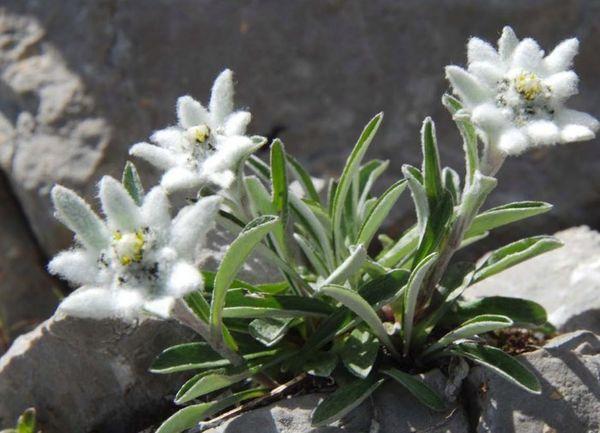
Which soil is suitable
The peculiarity of growing edelweiss is that it does not need a fertile soil, since this loses the decorative effect of the flower. On poor, but light and loose soils, on the contrary, it feels great. Crushed stone, coarse sand, and lime are added to the substrate.
Location and illumination
In nature, culture grows high in the mountains, where it is brightly illuminated by the sun. In the garden, he needs to be provided with the same bright area, preferably located on a hill. In lowlands and hollows, it has no place, because it does not tolerate stagnant moisture.
What to plant next
Alpine edelweiss is a modest flower, so it is not planted next to spectacular plants. Against their background, he will be lost. It is combined with the same undersized plants as it is: Alpine aster, young, heuchera, blackhead, viola, stonecrop, meadow sage.
Flower reproduction methods
Alpine edelweiss can be propagated by seeds, dividing the bush, cuttings. The advantage of vegetative reproduction is that its species characteristics are preserved.

Seeds
You can start sowing seeds for seedlings already at the end of February. The seeds are preliminarily kept for 2-2.5 months in the refrigerator. Then they are sorted out, dry, non-viable, disinfected in a weak solution of potassium permanganate for 15-20 minutes. Planting seeds is done as follows:
- drainage from small stones or expanded clay is poured at the bottom of the planting box;
- a substrate consisting of leafy earth and sand is poured;
- shallow grooves are made into which seeds are planted, covered with soil;
- plantings are sprayed with water from a spray bottle;
- the box is covered with glass or plastic wrap.
Seedlings will appear in about 2 weeks. Every day you need to ventilate the container and wipe off condensation from the covering material. In early June, young plants are planted in a permanent place. Alpine edelweiss will bloom in 2 years.
By dividing the bush
Overgrown bushes are propagated in this way. To do this, the bush is carefully dug out, trying to injure the roots as little as possible. With a sharp knife, edelweiss is divided into 2-3 parts. Each of the divisions should have several growth points.
The procedure is carried out in spring or autumn. Bushes are planted at a distance of 15-20 centimeters from each other. The separated plants bloom the next year.
By cuttings
Propagated by cuttings alpine edelweiss in June. To do this, use the tops of last year's shoots. The substrate for seedlings is selected from sand, leafy earth with the addition of lime.
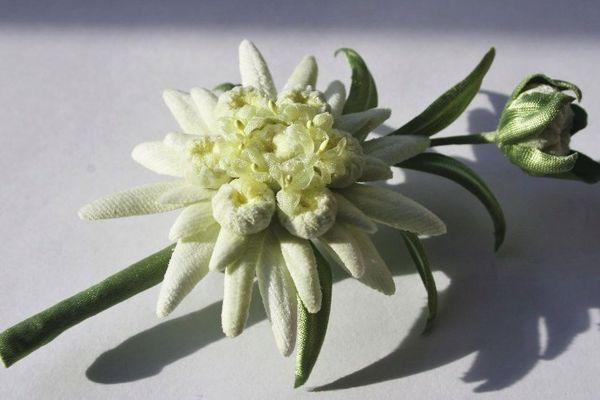
Cuttings are planted as follows:
- cut off parts of shoots are powdered in a preparation that stimulates root formation;
- at a distance of 10-15 centimeters, cuttings are planted in damp ground;
- cover the plantings with jars to retain moisture in them.
Seedlings are watered as needed. When they start to grow, the banks are removed. Blooming will come next season.
Important! Vegetative reproduction allows you to preserve the external features of the species.
How to plant and care for your garden culture
The culture can be planted on the site by seedling method, or sown directly into the ground. The disadvantage of the latter option is that flowering will not occur this year.
Technology and timing of planting seeds and seedlings
In the spring, with the onset of warmth, edelweiss seeds can be planted directly into the ground. For this, a place is marked out on an alpine hill or rockery, and seed material is placed there. There is no need to plant deeply, because in nature the seeds are carried by the wind, and they easily take root in crevices without being covered with soil.
The optimum embedment depth is 1 centimeter at a distance of 7-8 centimeters. In the future, if necessary, planting can be thinned out, leaving a distance of 15-20 centimeters between the bushes. To preserve moisture in the soil, and better germination, the area with sown edelweiss is covered with a film.

The bushes grown at home by the seedling method are planted in open ground in May or early June. Pits are dug, watered, and plants are planted in them along with a clod of earth. Bloom will come next year.
Watering and feeding
Abundant watering of alpine edelweiss is not required. In the season with moderate rainfall, it is not needed at all. An excess of moisture in the plant can rot the roots. In case of heavy rainfall, the planting should be covered with a film.
Alpine edelweiss does not like fertilizing, especially organic matter. It develops best in infertile, rocky ground. You can feed a little in the fall so that the plant will endure the frosty winter.
Flower transplant
When the bushes are overgrown, they need to be planted. To do this, pits are dug, watered, the roots of the transplanted flowers are gently straightened, sprinkled with dry soil. An indicator that the plants have taken root is the appearance of side shoots on the stems.
Weeding
To prevent young bushes from overgrowing with weeds, the site must be weeded. Since the plants are located close to each other, it is better to do this manually. The use of glanders can damage the stems and rhizomes of the culture.
Preparing for winter
If a sufficient amount of snow has fallen before the onset of frost, the edelweiss does not need additional shelter. You can only cover young bushes planted in autumn. To do this, they are mulched with peat, and open with the arrival of heat. Returning spring frosts are not terrible for edelweiss.
